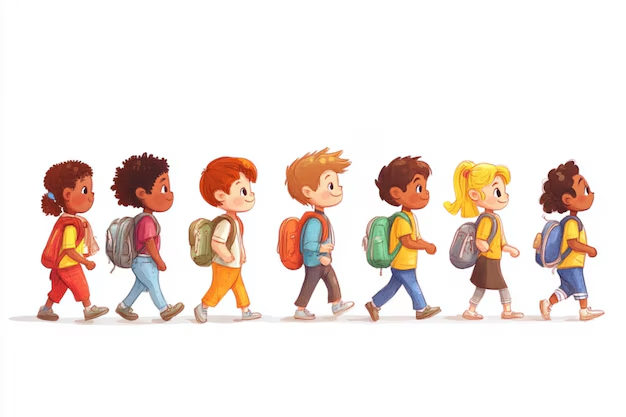
Written by Rylie Day-Walker
Transitions are often notoriously dreaded by children and adults alike. Given the stress, anxiety, and disruption that is often associated with them, it is no wonder that children and their caregivers frequently anticipate transitions with varying degrees of apprehension. No matter our feelings towards them however, and despite the need to eliminate unnecessary ones throughout a child’s day, transitions cannot and should not be entirely avoided. Instead, if our goal is to help fashion confident, emotionally intelligent children (and it is), the best things we can do are to understand the “why” behind difficult transitions, identify ways in which we may be contributing to their difficulty, and equip the children in our lives with the tools and strategies necessary to successfully navigate them.
There could be any number of external factors that make transitions difficult at any given time, many of which are thankfully in our control, and which will we visit in our next newsletter. However, at the heart of the issue is that when we ask a child to transition, we are asking much more from them than we may realize. Transitions intrinsically engage the prefrontal cortex of the brain, which is primarily responsible for executive function, and transitions demand a tremendous amount of executive functioning. Transitions even to a preferred activity require a child to focus, manage external and internal stimuli, redirect attention, control impulses, regulate emotion, shift arousal states (ex: going from an active to calm activity), and depending on their age and the specific transition, process and prioritize directions.
These demands are only exacerbated by the fact that we may be inadvertently working against our children, rather than with them in these pivotal moments. When we as adults enter a transition, especially one which has been historically more challenging, with developmentally unrealistic expectations, or expectations that are communicated in a way a child cannot developmentally understand and process, the transition is bound to be difficult. Furthermore, lack of guidance, warning, or preparation, especially when a child is engaging in a preferred activity will all contribute to unease or uncertainty of what comes next.
What often results are behaviors that may ostensibly appear to some as willful defiance or a simple refusal to cooperate, but are often (but not always) an indication that a developing brain may not have been properly guided or supported by the surrounding environment. This may manifest as avoidance (a child seeming to ignore you), resistance (a child refusing), distraction (an attempt to distract others or themselves by engaging in an activity unrelated to the transition), negotiation, stalling, or extreme heightened emotions.
If we perhaps reframe the way we think of these behaviors and consider them as a form of communication, we may actually empower both ourselves and our children. They may be developmentally incapable of negotiating transitions entirely on their own without proper tools and guidance, but thankfully they don’t have to.

No Comments